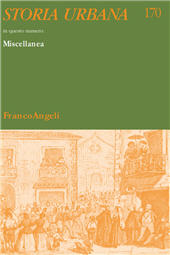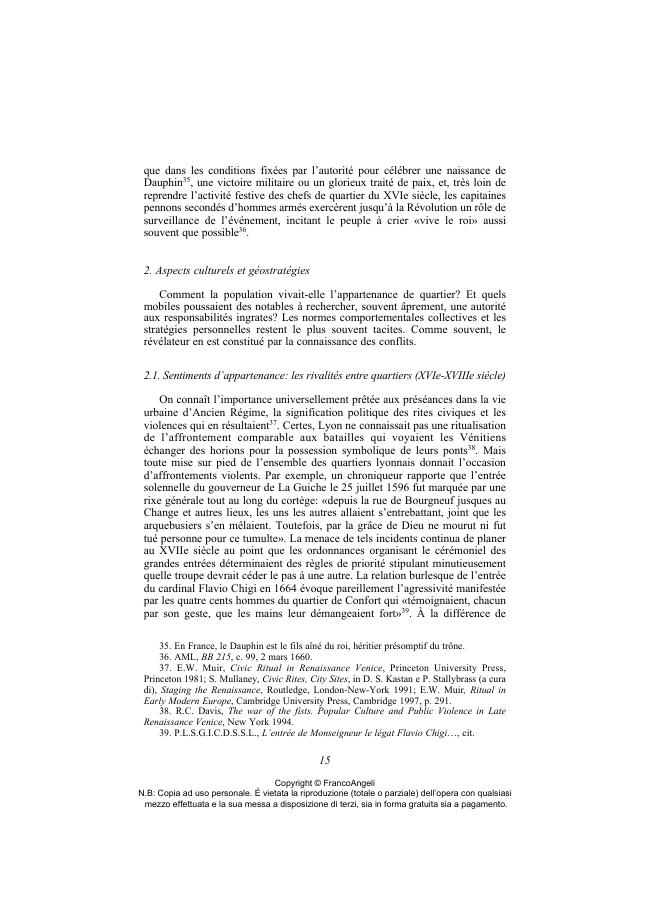2021 - Franco Angeli
Article
Digital Version
Download | Copy/paste | Printing
Territoires et rapports sociaux à Lyon à l'époque moderne
P. 5-25
- This paper discusses the aspects of territorial organization in Lyon from the 16thuntill the 18th century. A special attention is given to the cultural relations between the population and his territories and to the political stakes linked to the geography ofwards. In the 16th century, territories were not only military units, but had an important festive role together with trade associations. After the civil wars, the festive function disappeared, the ward chiefs beeing named and controlled by the town corporation. The military units, or "pennonages" fullfilled three main missions: defending the city, representing the inhabitants during the royal visits, and, overall, repressing the riots. In the 17th century, Lyon was an industrial city attracting many workers, creating a "dangerous population". So, municipal geostrategy recut the urban territory in order to isolate the poorest wards.
- The population of each territory seems to have shared a strong spatial appropriation, fighting for a better rank during a civic procession or for the use of a common parade square. During the 18th century appear new shapes of specialized territories due to the multiplication of public service contractors. But the social tensions around silk led to the riots of 1744 and 1745, and the wards were totally recut again for restoring a stronger militia. Emulation was encouraged. But geographical segregation had separated popular wards and the "bonsquartiers" frequented by bourgeoisie. Rather than administrative, the real boundaries were socio-cultural. [Publisher's text]
-
Information
ISSN: 1972-5523
KEYWORDS
- Lione, Storia moderna, Geografia istituzionale, Governance locale, Identità collettive, Relazioni sociali
- Lyon, Early Modern Period, Institutional Geography, Local Governance, Collective Identities, Social Relations
-
In this issue
- Territoires et rapports sociaux à Lyon à l'époque moderne
- L'entrate et proventi de' comuni, ville, popoli et luoghi del nostro Contado et Dominio : le risorse delle comunità soggette a Firenze agli inizi del principato (1534-1535)
- Spazio urbano, spazio militare : la duplice dimensione di Orbetello e dei Presìdi di Toscana in età moderna
- Andavan questuando con pericolo loro e scandalo altrui : conservatori femminili nella Parma settecentesca
- L'apparenza di una brillantissima festa : monarchia e territori nei viaggi del re delle Due Sicilie Ferdinando II nelle Calabrie del 1833 e 1852
- Le imprese di costruzioni nei mercati esteri : ipotesi di ricerca e alcune evidenze dal caso italiano
- Sommari



